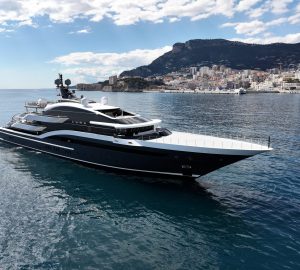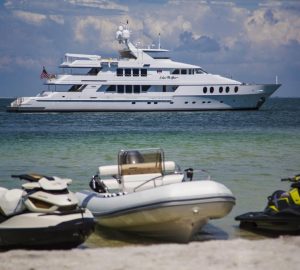Cantiere Delle Marche in Italy is nearing the launch of the new Darwin Class 102′, which is to take place in about a month. The shipyard is also preparing to launch the 108ft flagship of the successful explorer yacht range CdM Nauta Air, constructed in aluminium and created in collaboration with Nauta Yachts.
The 102-foot BABBO explorer is due to be launched in early May, following which she will be officially presented at the Cannes Yachting Festival. The superyacht represents the second Darwin Class 102 sold by the shipyard. The yacht is characterised by spacious interiors and exterior areas, well laid out for larger groups of guests on board, with great attention to water toys and diving centre, which is located in the large and fully equipped garage of almost 25 square metres. Just like her sistership ACALA, BABBO will also store a 5-metre tender on the aft platform, while the 6,3-metre tender will be located on the upper deck.
An experienced management team, including Captain Marc Maudet and the staff at CdM, paid close attention to the yacht’s configuration in order to create a vessel that is reliable in all weathers and in any part of our globe, a characteristic that distinguishes the explorer yachts constructed by CdM.
CdM’s capability in creating fantastic oceangoing vessels is reflected by BABBO’s sistership ACALA which, following her delivery, crossed the Atlantic and visited diving havens such as Cuba, Queen’s Garden and the Blue Hole in Belize, or PERCHERON which crossed the Atlantic already twice. Darwin Class yachts have the capability to sail smoothly in seas with waves of 6,5 m and winds over 50 knots, without any problem of seakeeping and in full system efficiency.
BABBO is a spacious superyacht, spreading over three decks with generous interior spaces of 240 square metres and 244 GRT volume, which together hold in detail the essence of an explorer vessel, while keeping the quality finishes and the luxury typical of superyachts. M/Y BABBO features interior design created in collaboration between the South American designer Simon Hamui on behalf of the owner, who defined the style and decor, and the PFA studio from Fano, that was responsible for general plans, space planning and for overseeing the whole management of the interior design of the project.




















